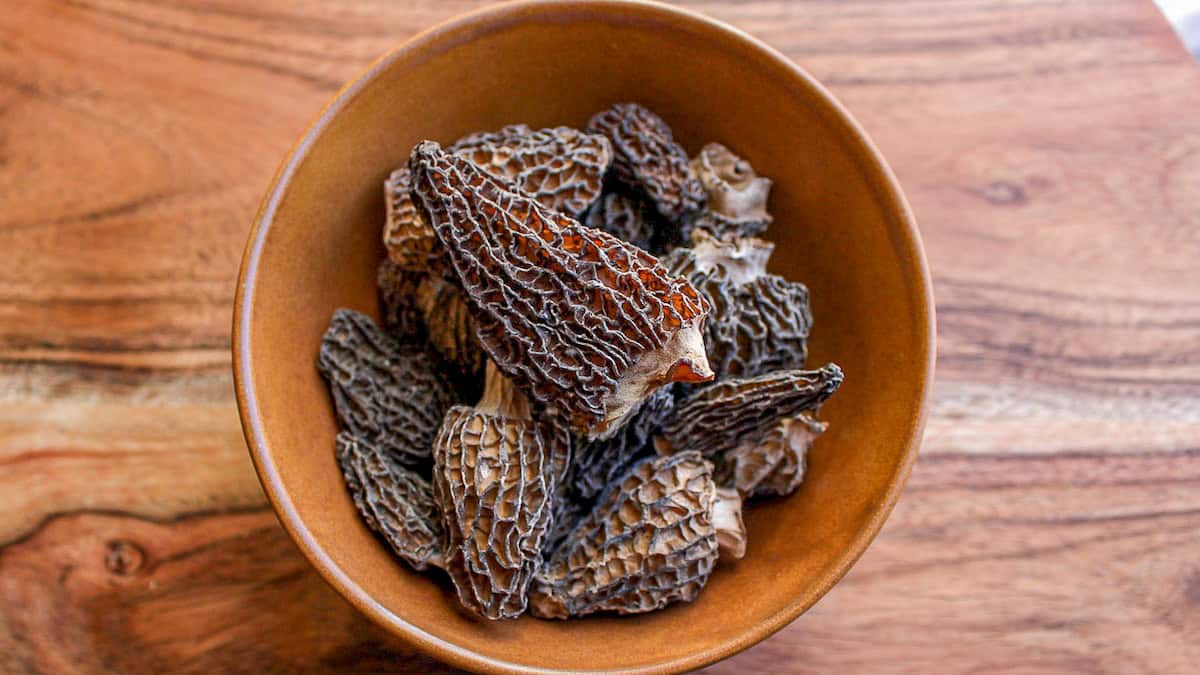Morels, those prized edible mushrooms with their earthy, nutty flavor and honeycomb texture, have a tantalizingly short season. But fear not, fungus fans! Drying morels is an excellent way to extend their shelf life and enjoy their unique taste throughout the year.
This guide explores three effective methods for drying morels at home: air-drying, oven-drying, and using a dehydrator. Each approach offers its own advantages and considerations.
Before You Begin: Cleaning Morels
Unlike most mushrooms, morels require a more thorough cleaning due to their sponge-like structure. Here’s how to prep them for drying:
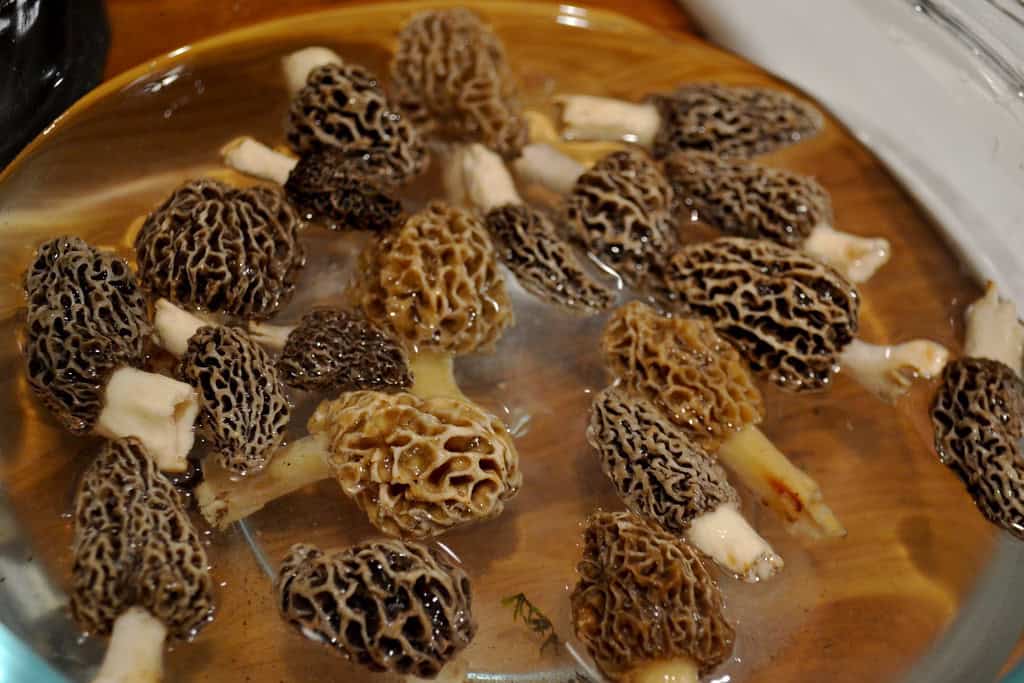
- Soak: Fill a large bowl with cold water and submerge the morels. Gently swish them around to loosen any dirt or debris. Let them soak for 10-15 minutes.
- Drain and Lift: Carefully lift the morels out of the water, allowing any grit to settle at the bottom of the bowl. Discard the soaking water.
- Pat Dry: Spread the morels on a clean kitchen towel or paper towels and pat them dry to remove excess moisture.
Method 1: Air-Drying Morels (Traditional and Equipment-Free)
This age-old technique requires minimal equipment and is perfect for those looking for a natural drying process.
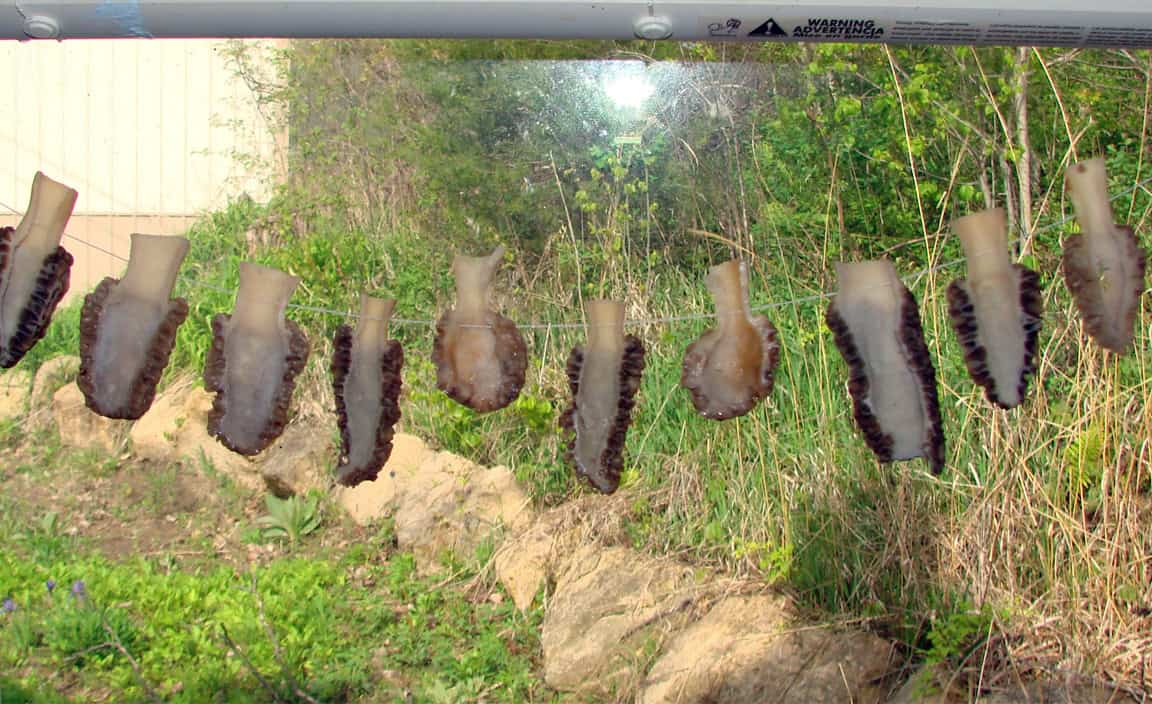
- Stringing: Thread a needle with sturdy cotton thread, unflavored dental floss, or similar material. Pierce the stem of each morel lengthwise, leaving about 1/2 inch of space between each mushroom for proper air circulation. Knot the thread at the end of each string to secure the morels.
- Hanging: Find a cool, dry, and well-ventilated location out of direct sunlight. A screened porch, attic, or garage with good air flow are ideal options. Hang the strings of morels and let them dry for 2-7 days, depending on the temperature and humidity. The morels are finished drying when they are completely brittle and hard to the touch.
Method 2: Oven-Drying Morels (Faster and Controlled)
This method utilizes your oven’s low-heat setting to dehydrate the morels.
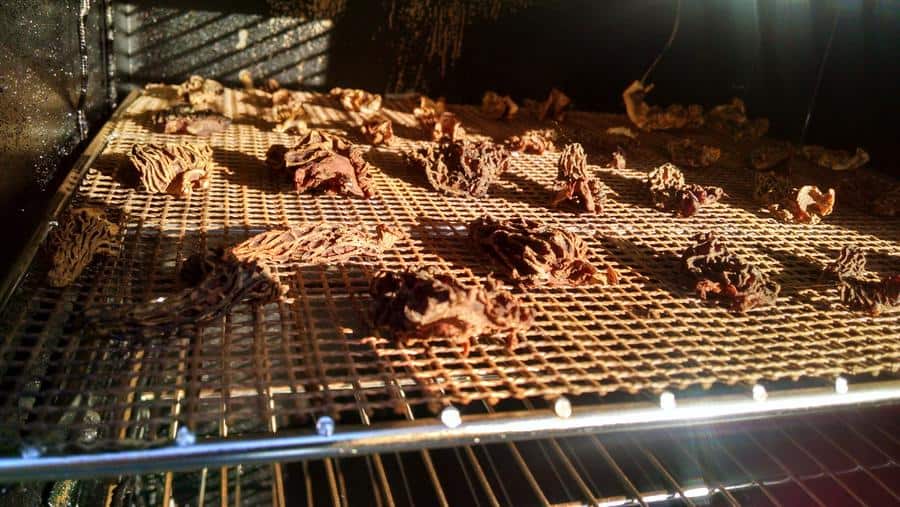
- Placement: Arrange the cleaned morels in a single layer on a baking sheet lined with parchment paper. Alternatively, thread the morels and hang them from the oven racks using the same method as in air-drying.
- Temperature: Set your oven to the lowest possible temperature setting, ideally between 130-140°F (54-60°C). If your oven doesn’t go that low, crack the oven door slightly to allow moisture to escape.
- Drying Time: Dry the morels for 6-8 hours, checking on them periodically. They are ready when they are completely dry and brittle.
Method 3: Using a Dehydrator (Quick and Effcient)
Dehydrators are specifically designed for drying food, making them a convenient and efficient option for drying morels.
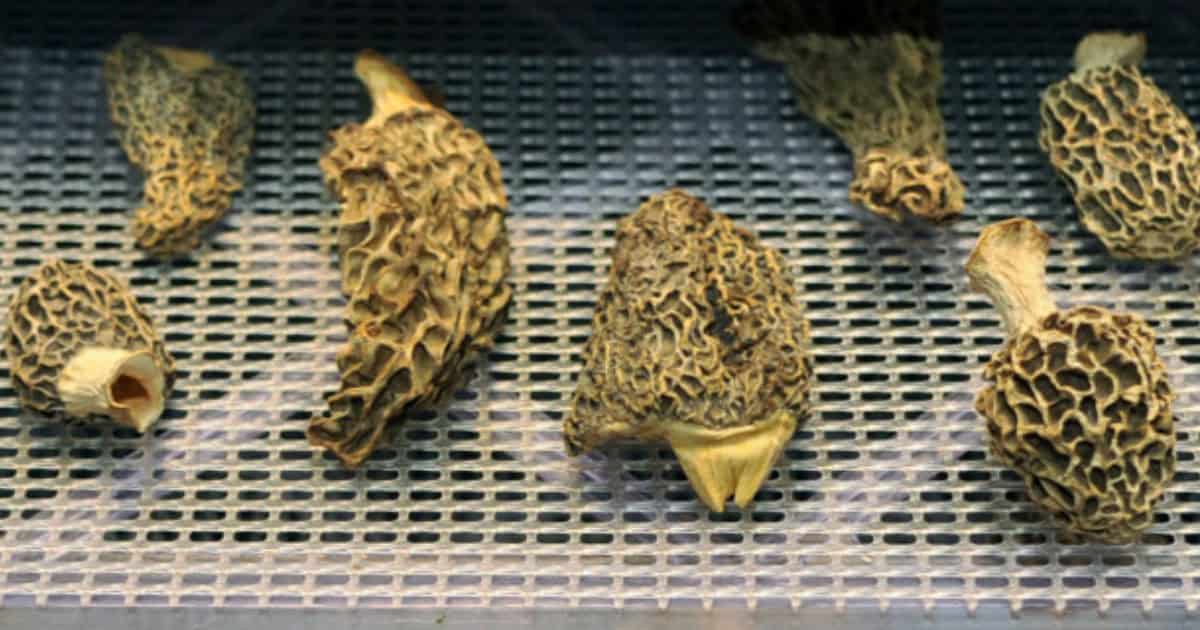
- Single Layer: Spread the cleaned morels in a single layer on the dehydrator trays.
- Temperature: Set the dehydrator to 110°F (43°C).
- Drying Time: Dry the morels for 8-10 hours, or until they are completely dry and brittle.
Storing Dried Morels
Proper storage is crucial to preserve the quality of your dried morels. Here are some key tips:
- Moisture-Proof Containers: Once completely dry, store your morels in airtight containers. Glass jars with tight-fitting lids or vacuum-sealed bags are excellent choices.
- Cool, Dark Place: Keep the containers in a cool, dark, and dry location, such as a pantry or cupboard.
- Shelf Life: Properly dried and stored morels can last for up to a year at room temperature. For even longer storage, consider freezing them, which can extend their shelf life by several years.
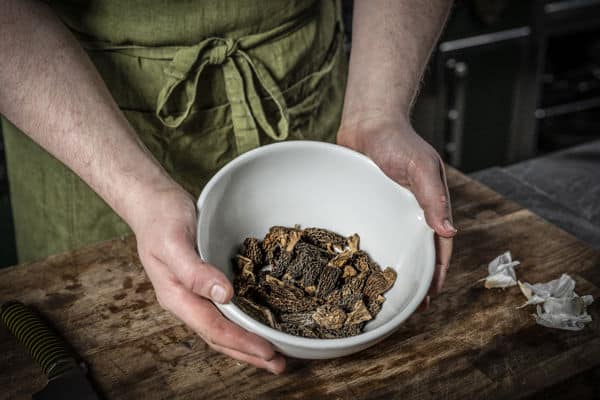
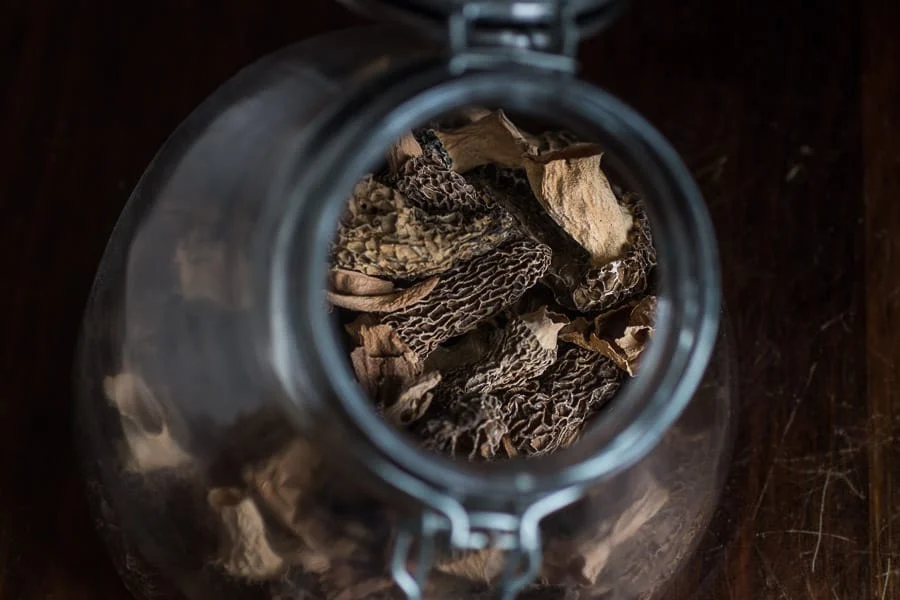
Rehydrating Dried Morels
When you’re ready to use your dried morels, simply rehydrate them to restore their plumpness and flavor.
- Soaking: Place the desired amount of dried morels in a bowl and cover them with warm water. Let them soak for 20-30 minutes, or until they are soft and pliable.
- Flavorful Liquid: The soaking liquid absorbs the concentrated morel flavor. Reserve it and use it in your recipe for added depth.
- Concentrated Flavor: Dried morels have a more intense flavor than fresh ones. You may need to adjust the amount used in recipes accordingly.
Tips from Morel Hunters:
- Fresh is Best: While drying preserves morels, some flavor and texture is lost compared to fresh mushrooms.
- Pick Young and Firm: Select young, firm morels with a fresh, earthy scent. Avoid any that are slimy, moldy, or past their prime.
- Size Matters: For air-drying and oven-drying, it’s best to use morels of similar size to ensure even drying. Large morels can be sliced in half lengthwise.
- Mold Prevention: If you notice any mold growth while drying, discard the affected morels immediately. Ensure proper air circulation and avoid drying in overly humid conditions.
- Browning: Slight browning is normal, especially with oven-drying. However, if the morels become excessively brown, it might indicate overheating or prolonged drying.
Additional Techniques:
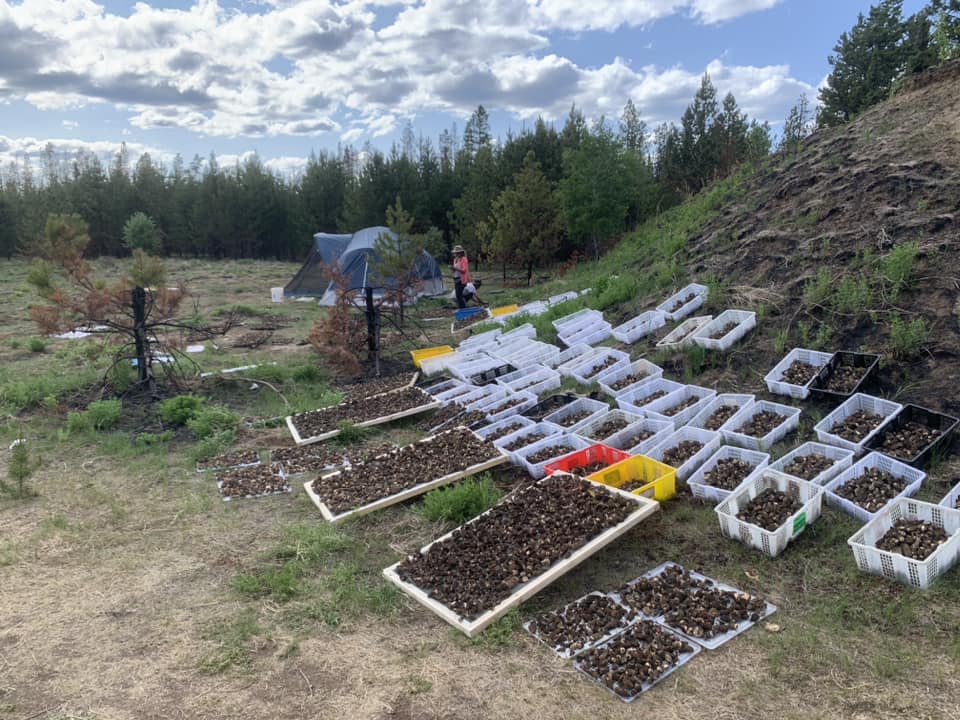
- Solar Dehydration: In hot, dry climates, solar dehydrators can be a sustainable option for drying morels. Follow the manufacturer’s instructions for optimal results.
- Smoke-Drying: For an extra flavor dimension, some experienced foragers try smoke-drying morels using a smoker. This technique requires careful monitoring to avoid burning the mushrooms.
Happy Foraging & Cooking,
Fabi
Wild Fresh Forager

